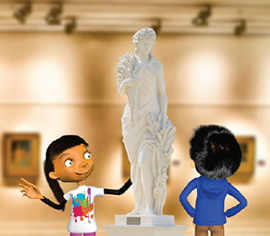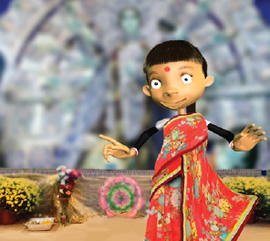Mother’s Day is a special day dedicated to celebrating significant people in our lives. The celebration of Mother’s Day has been influenced by many different cultures, time periods and women.
- Mothers throughout history
- The origins of Mother’s Day
- Mother’s Day around the world
- Mother’s Day fast facts
- References
Mothers throughout history
Mother’s Day, as we know it today, with breakfast in bed, cards and presents, is a relatively young event, but the celebration of mothers and mother-figures dates back to ancient times.
Ancient times

In ancient times, many cultures would celebrate a mother goddess whom they viewed as the mother of all.
In ancient Egypt, Isis was worshipped as a mother goddess. Her son Horus was said to be the first of the Pharaohs. In ancient Greece, people worshipped Rhea, who was mother of the gods, and Gaia, the earth goddess.
Festivals to celebrate mother goddesses were often held in Spring as this was viewed as a time of new life and fertility. New life and fertility were associated with women and mothers as they are the ones who give birth. An example of one such celebration was the Roman festival of Hilaria, honouring the mother goddess Cybele.
In many countries around the world, Mother’s Day is still celebrated in Spring.
Mothering Sunday
As time progressed, Christianity began to spread across Europe and England, incorporating some of the ancient festivals into its newer religious celebrations.
During the 1600s in England, the fourth Sunday of Lent, a date close to the Roman Hilaria, became known as Mothering Sunday because early Christians honoured the mother of Christ (the Virgin Mary) on this day. People would also decorate their Mother Church (the church where they were baptised) with flowers and jewels.
Soon, the Mothering Sunday celebration began to include the celebration of actual mothers. On this day, maids and servants were allowed to travel back home to visit their mothers. Traditionally they would bake a simnel cake, filled with spices and fruit, to take home to her. Families would feast and give small presents to their mothers.
The origins of Mother’s Day

Mother’s Day, as we know it today, began in North America and was pioneered by two women: Julia Ward Howe and later, Anna Jarvis.
Julia Ward Howe’s quest to create a holiday dedicated to mothers and peace began in 1870, a time of civil war in North America. Howe wanted mothers to come together to stop their sons from fighting against each other. However, Howe’s version of Mother’s Day only lasted a few years.
In 1908, Anna Jarvis campaigned for an official Mother’s Day. Jarvis succeeded and was also responsible for making the white carnation (her mother’s favourite flower) a popular choice for giving on this day.
Jarvis believed so strongly in Mother’s Day that she even left her job to commit herself to having it recognised throughout the United States. Her hard work paid off in 1914 when Mother’s Day was finally recognised nationally, with an official celebration date of the second Sunday in May.
Mother’s Day soon became commercialised (used to make money) with card sellers and florists promoting their products as essential to Mother’s Day. Jarvis disagreed with this and was even arrested for protesting against the sale of flowers at a Mother’s Day event. She felt as though people had taken her pure holiday and were greedily trying to profit from it. Despite this, by the time of her death, Mother’s Day was being celebrated in over forty countries. Today, Mother’s Day is celebrated in over seventy nations around the world.
In Australia
Mother’s Day in Australia is very much like the day Jarvis worked to create in the United States. However, in Australia we have our own special Mother’s Day guardian. Janet Hayden was a woman who lived in Sydney and often visited a friend in hospital. In 1923, while at the hospital, she was struck by the number of patients who were lonely, ageing mothers, and campaigned for people to donate presents to them. Schoolchildren and local businesses generously donated all sorts of goodies to the mothers.
Mother’s Day around the world
Sweden
In Sweden plastic flowers are sold on Mother’s Day, with all the proceeds going towards mothers and their children who are in need.

India
A ten-day festival called Durga Puja, which celebrates the mother goddess Durga, is often closely associated with the celebration of Mother’s Day.
The former Yugoslavia
In the former Yugoslavia various family members are celebrated with a series of holidays, starting on Children’s Day, three days before Christmas. The following Sunday is Mother’s Day, and the next Sunday is Father’s Day.
Ethiopia
There is no firm date for Mother’s Day in Ethiopia as it occurs when the rainy season ends. When the day finally arrives, families return home for a large feast and two or three days of celebration. Mothers and daughters rub butter into their skin and sing songs.
Australia
In Australia we often treat our mum to breakfast in bed, or take her out to lunch at a lovely restaurant. Children often make their own Mother’s Day cards to give with some flowers, or perhaps a box of chocolates.
Mother’s Day fast facts

- Can you say mother in any other languages? Mother is ‘Mère’ in French, ‘Mutter’ in German, ‘Madre’ in Italian and ‘Matka’ in Polish. Do you think it is a coincidence that these words all start with M? Not really, as in many languages the word for mother begins with the letter M.
- It’s not just mothers who are celebrated, Japan has a National Children’s Day called ‘Kodomo no Hi’. Originally, this day celebrated only sons, but now both sons and daughters are celebrated.
- In France, during the years after World War I, December 19 was called ‘La Fête des Mères’. Mothers were awarded medals according to the number of children they had:
- four or five children would win them a bronze medal
- six or seven children would win them a silver medal
- eight or more children and they would receive a gold medal.
- During the 1920s and 1930s it was suggested that Mother’s Day and Father’s Day should be combined to form a Parent’s Day. Do you think this is a good idea?
- This is amazing! The highest number of children born to one mother was to a woman who lived in sixteenth-century Russia. She had 69 children with her husband Feodor Vassilyev. They included sixteen pairs of twins, seven sets of triplets and four sets of quadruplets!
- Did you know that August is the most common month for mothers to give birth to their children?
- Every year, Australians spend about $1.36 billion on Mother’s Day and $660 million on Father’s Day!
- If you do not have a mother, you can still use Mother’s Day to honour a special female in your life. This could be a relative, family friend, teacher or coach.
References
The following links will direct you to the homepage of the websites used as references for this topic.
- Mother’s Day History: www.mothers-day.123holiday.net
- Mother’s Day: www.dayformothers.com
- Mothers Net: www.mothers.net




